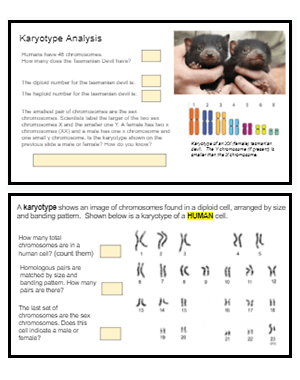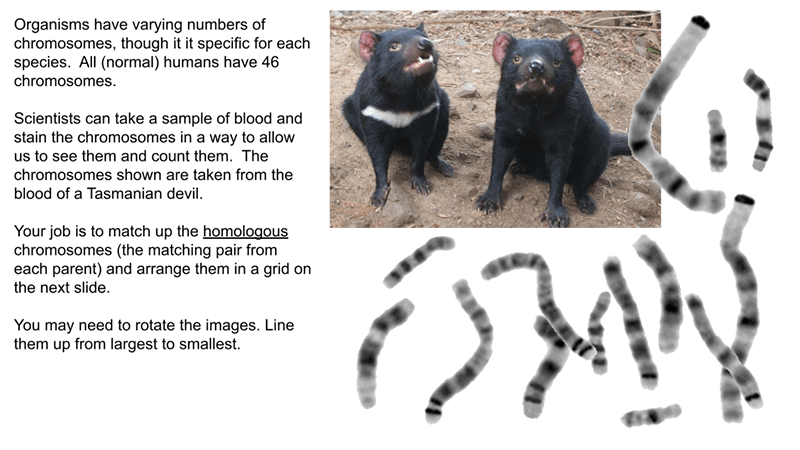
This activity is a remote version of a paper version where students cut chromosomes of a Tasmanian devil and arrange them onto a karyotype. I also have a similar activity that uses human chromosomes, but I think that students find it frustrating to try to match 23 sets of chromosomes.
Tasmanian devils only have 7 pairs of chromosomes. I generally just want students to visualize homologous chromosomes and how the pair. Having only 7 sets eliminates the “busywork” feel of the activity.
In this version, students answer questions directly on the slides and use the mouse to drag chromosomes to a grid. The chromosomes are matched and arranged by size. A later task then asks them to match an “extra” chromosome on the karyotype to model trisomy.
Students compare the Tasmanian devil karyotype is to a human karyotype where the person has an extra chromosome 21, which results in Down syndrome. Any change in the number of chromosomes can cause structural and physiological problems in the organism.

This is an activity I do after a short lesson on genetic disorders which includes how they are diagnosed. In the paper version students cut chromosomes and glue them onto a grid. Note: the two are not exactly the same. I designed the remote version as independent work, that students can do on their own.
You can also discuss how the Tasmanian devil is endangered due to a transmissible cancer that causes facial tumors. This video explains how devils contract this cancer and what is being done to save the species.
Grade Level: 8-12
Time Required: 15-20 minutes

